Wondering what type of rowing machine is right for you? From low impact to high intensity, here’s a look at the different types of rowing machines.
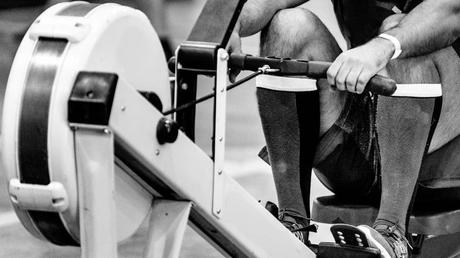
Rowing machines (also known as ergs) are one of the best cardio machines in the gym for weight loss.
Not only are they a challenging workout, but they work just about your entire body, deliver some of the most intense HIIT workouts known to man, and they are low impact.
Not bad!
But before you park your butt on the rowing machine at your local gym (or invest in a rower for your home), it’s worth understanding the different types of rowing machines.
In this article, we will cover ALL of them, highlight the pros and cons of each, and list some of the more popular rowers within each category.
By the end, you will be a row machine pro.
Let’s jump in.
What is a Rowing Machine?
First, the basics.
A rowing machine, or indoor rower, or ergometer, is a (brutal) piece of cardio equipment that closely simulates rowing a boat. (Row, row, row your boat!)
The sliding seat on a rowing machine simulates the seat found in a scull or shell.
Once seated, you use a single handle instead of a pair of oars to pull and generate resistance via a range of mechanisms, including water, air, magnets, and hydraulic cylinders.
Rowers are popular both in studio gym settings as well as with people looking to lose weight and improve cardiovascular fitness at home thanks to the low-impact nature of the exercise that is easier on the joints compared to running.
Rowing machines are also exceptionally user-friendly; with just a little instruction anyone can sit down, grab the handle, and crank up their fitness, making them ideal for beginners and elite athletes alike.
The 4 Types of Rowing Machines
Water Rowers
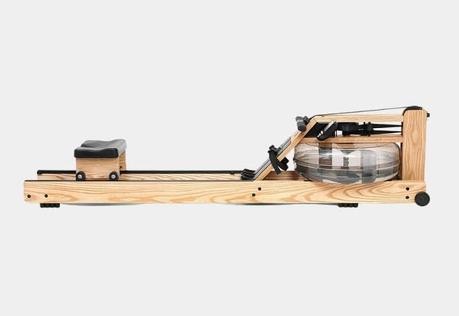
Rowing happens on water, and a better way to bring it onto dryland than by using it in a tank with a flywheel to get the sense of actually being out on the water.
Water rowers use water—duh—combined with a flywheel in the tank to generate resistance. To generate more resistance, add more water.
These types of water rowers are heavier, giving them a more stable and smooth ride compared to other rowers (water rowers tend to weigh more than 100lbs when the tank is filled).Many of the best water rowers are exquisitely designed, with frames made of oak or walnut (many are made with steel or aluminum as well).
Some of the best water rowers (like the brand WaterRower) make very feature-rich and beautiful looking rowers that look as good as they perform.
Water rowers trend towards the higher end of the spectrum when it comes to price.
The best water rowers include:


Smooth rowing motionCan be pricey
The wood framed rowers are gorgeousRequire consistent maintenance and water refilling
Quiet operation
Water sounds simulate being out on the water
Built for heavier users (some have 1,000lb weight capacity)
Hydraulic Row Machines
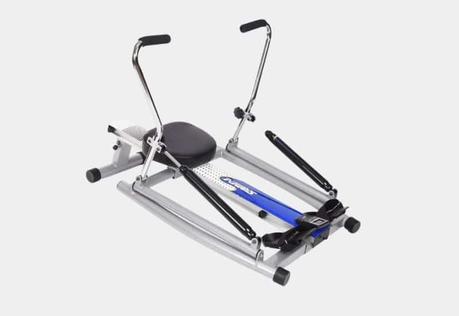
Hydraulic rowing machines are very compact and inexpensive, making them an excellent choice for people on a budget, both price-wise and with space.
Resistance is created by a pair of hydraulic cylinders on each side of the machine. Because there is no flywheel, hydraulic rowers tend to be fairly quiet, giving them another win for at-home workouts.
While inexpensive and easy to move thanks to their light frames, hydraulic row machines don’t quite have the “natural” rowing machine as the seat position is fixed through the movement.
The handle path is not straight, as with other rowers, and the bargain basement hydraulic rowers often suffer from unevenly installed arms, which catch and “clunk”, making for a frustrating rowing experience.
Popular hydraulic rowing machines include:
- Sunny Health Hydraulic Rowing Machine
- Stamina 1215 Orbital Rowing Machine
- Stamina BodyTrack Glider Rower


Compact and lightweightFixed seat position
Minimal maintenance requiredDon’t pull in a straight line
InexpensiveLow weight capacity
Ninja quiet
Easy to move
Magnetic Resistance Rowers
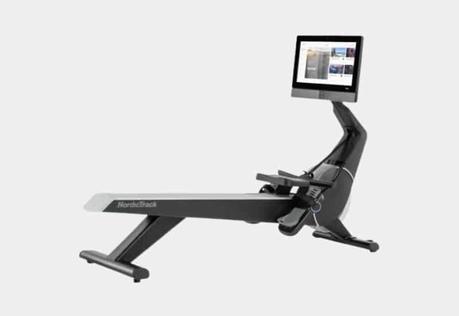
Like other cardio machines such as elliptical machines, rowers often use magnetic resistance to create, err, resistance when exercising.
Magnetic resistance rowers use a flywheel with magnets that close in on the disc as you increase the resistance. Because of the variable resistance, users have a wide range of resistance options when saddling up on the machine.
Magnetic resistance rowers are relatively inexpensive, easy to maintain, and are very quiet, making them an excellent choice for home gyms.
Many of them are also foldable, making them a solid choice for multi-use areas in your home like a bedroom or living room.
Some of the top magnetic flywheel rowing machines include:


Nearly complete silentNot as natural a feeling as water or air rowing machines
Lots of budget-friendly optionsMore expensive compared to air and hydraulic row machines
Many models are foldable
Lots of resistance levels for a custom workout
Low maintenance; don’t have to refill water constantly
Air Rowers
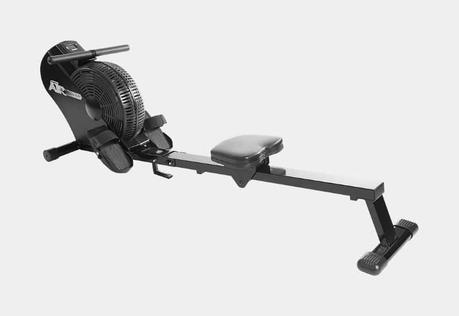
Rowing machines that rely on air for resistance use a flywheel and fan that spins, pushing against the air and creating variable resistance, similar to air bikes (aka assault bikes).
Air resistance rowers rely completely on your own power to generate resistance—harder you pull, the harder the resistance—making it great for people who don’t want to mess around with resistance levels.
This makes air rowers the best way to do HIIT workouts on a row machine as you don’t have to adjust a knob to increase and decrease difficulty between intervals.
Some of the best rowing machines for home gyms, such as the Concept2 rowers, use air resistance, as they use dampers to mitigate how much air enters the flywheel. (More air, the “heavier” the stroke feels.)
The principal downside is that they are quiet noisy, what with all the air that is being pushed around, to the point that you can easily hear the machine in the next room.
The best air rowers include:
- Concept2 ROWERG Rower
- Stamina ATS Air Rower


Resistance adapts to your power output; no resistance knobs to tinker withNoisy compared to other row machines
Great for HIIT workouts as they have variable resistance
Natural-feeling, smooth strokes
Adjustable stroke weight
The Bottom Line
Fortunately for the rower enthusiast, there are a number of different ways and types of rowing machines to get you started on your fitness journey.
Each type has their own strength and weaknesses. Some are short and quiet while others simulate the water sounds of being out in fresh air, rowing across the lake.
Choose the rowing machine that suits your needs and goals, matches your budget and home gym, and you will be well on your way to taking advantage of everything a rower machine has to offer.
More Stuff Like This
The 6 Best Cardio Machines for Weight Loss (And How to Use Them For Best Results). Looking to turbocharge your weight loss in the gym? Here’s a look at the best cardio machines for losing weight, including how many calories each machine burns.
The Best Cardio Workouts to Do at the Gym (Plus Benefits, Machines, and Sample Workouts). Ready to take your cardio game to the next level? Here’s a look at the best cardio workouts to do at the gym, benefits, and the best cardio machines to use.
